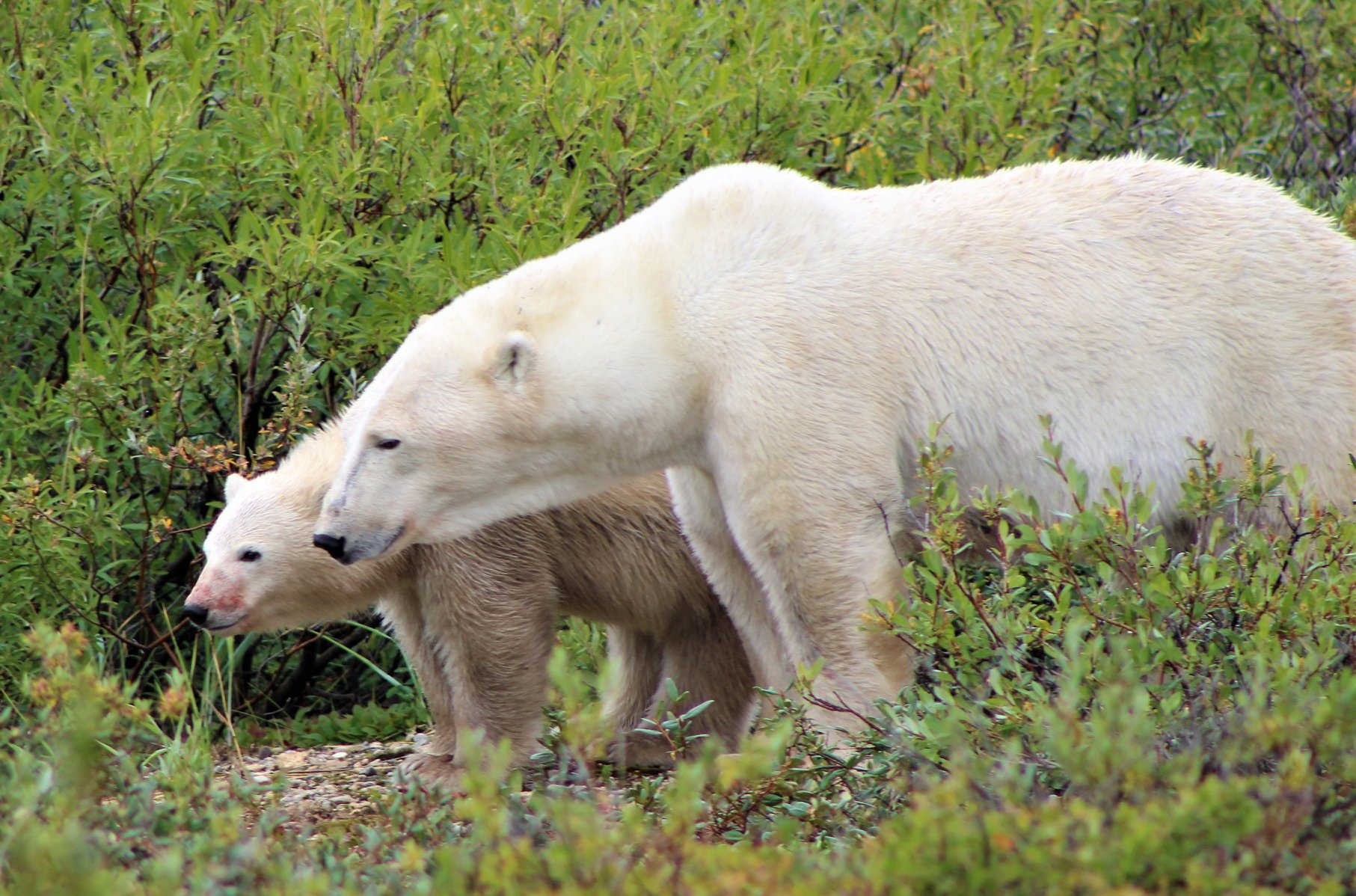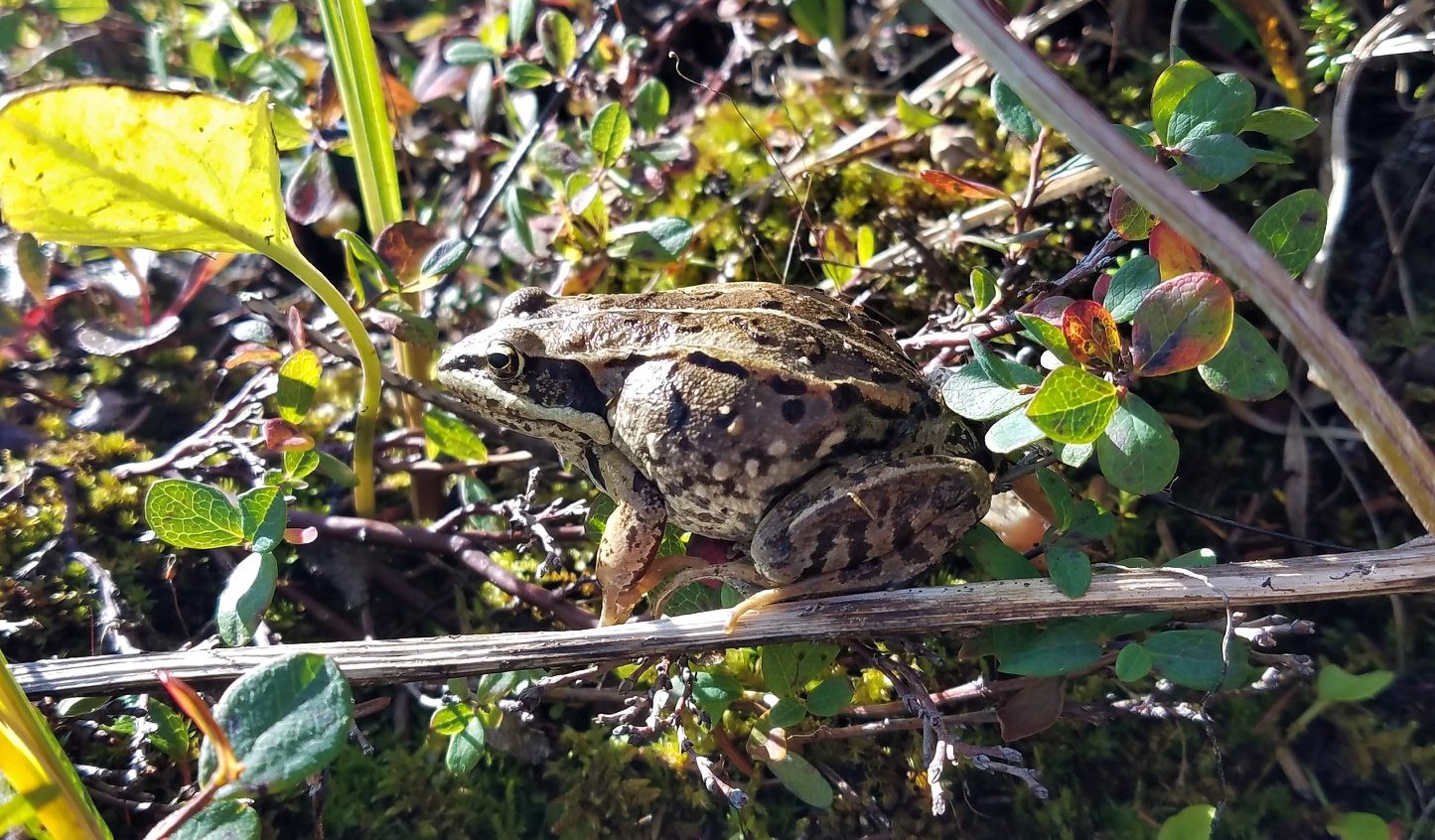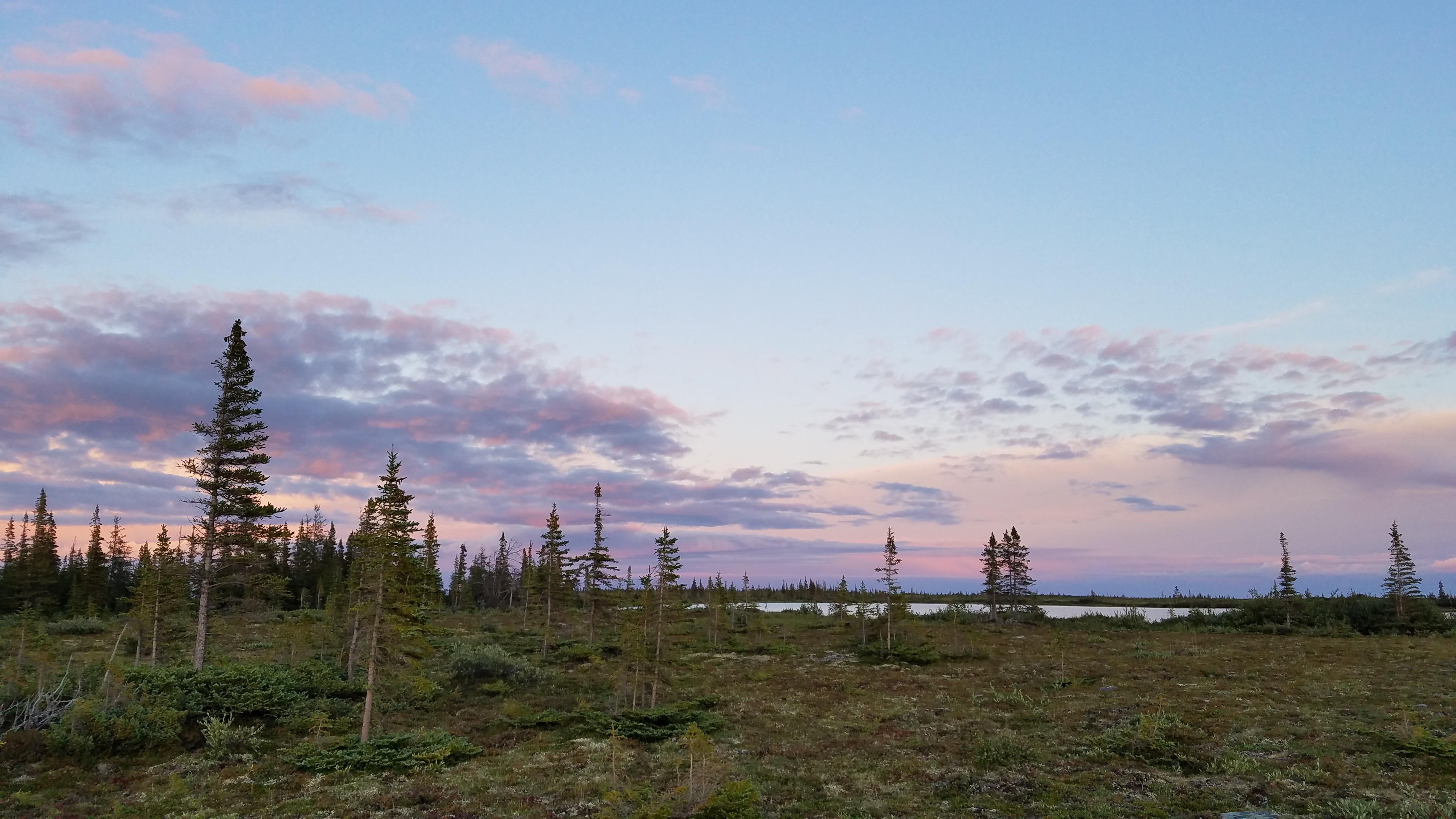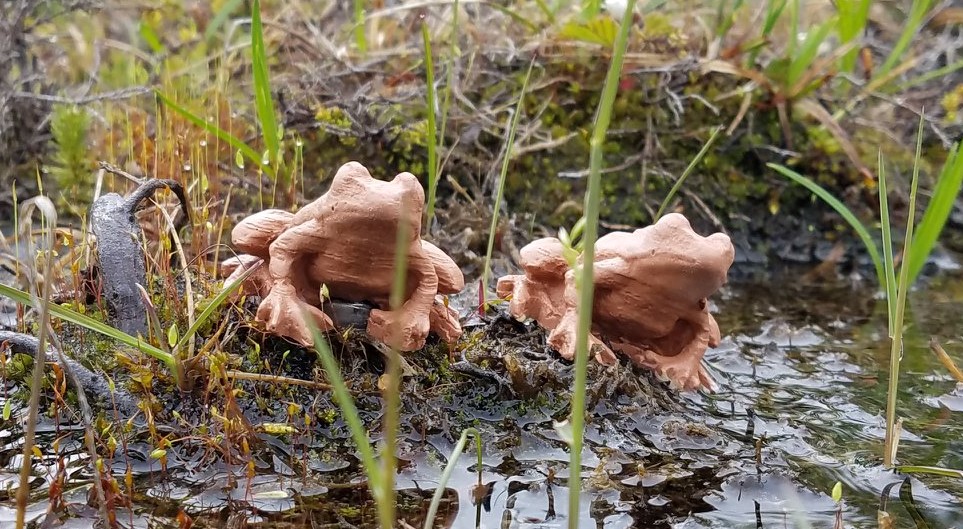Thomas Hastings, Graduate Assistant, Appalachian State University

Polar bears spotted near the coast of Hudson Bay. (Photo: Thomas Hastings)
After working with wood frogs (Rana sylvatica) for several years in Maine, I decided to continue my studies with this species at the northern extant of their range. Last summer, I traveled to the Hudson Bay Lowlands of Subarctic Manitoba for the first field season of my master’s research. This is a unique study area because about 25% of the landscape is covered in shallow wetlands due to a continuous layer of permafrost. In addition, there are multiple habitat types (tundra, boreal forest, and tundra/forest ecotone) located within close proximity to each other. But most exciting to me is the presence of wood frogs (and polar bears!) in this northern, Subarctic landscape. Wood frogs, along with boreal chorus frogs (Pseudacris maculata), are the only two amphibians capable of persisting in the extreme winter conditions of my study area due to their ability to tolerate freezing temperatures.

Adult wood frog being tracked in ecotone habitat. (Photo: Thomas Hastings)
While it has been known that wood frogs are present in the Subarctic of Manitoba, little research has been conducted on adult habitat selection during their active time period. However, Bishir et al. (2018) found that wood frogs were primarily located in tundra habitat and were more likely to use microhabitat locations with standing water, shrubs and sedge cover during the species active time period. Wood frog use of tundra habitat is important because Arctic amplification is rapidly warming and altering Subarctic and Arctic landscapes. For example, warming has resulted in permafrost thaw, shrub and tree movement into tundra habitat, and altered hydroperiods of wetlands as a result of increased drainage and evaporation rates (Wolfe et al. 2011, Mamet and Kershaw 2012). Given these rapid changes, it is important to gain additional data on adult wood frog habitat use before climate change further alters Subarctic conditions.
My research investigates how environmental conditions and physiological processes influence wood frog habitat use at the northern edge of their range. More specifically, I am comparing the evaporative water loss (EWL) rates, water balance potential, and body temperature of wood frogs among the three Subarctic macrohabitat types. I am also estimating these thermal and hydric conditions at radio-tracked wood frog microhabitat locations. This is important because terrestrial amphibians such as wood frogs have permeable skin and are therefore prone to water loss. Due to physiological requirements such as maintaining water balance, wood frogs are dependent on their environment and must select habitat to remain within suitable conditions.

Transition of habitat types that would be seen at one of my transect sites: boreal forest habitat with dense tree coverage (far, back left) to tundra habitat dominated by moss and lichen (bottom right). (Photo: Thomas Hastings)

Plaster models used to estimate the physiological responses of wood frogs. (Photo: Thomas Hastings)
To estimate the EWL rates, water balance potential, and body temperature of wood frogs, I made 60 plaster models that also lose water in the absence of moisture (Peterman and Semlitsch 2013). Throughout the summer, models were always deployed in the field as a pair. In each pair, one model (with a barrier underneath model to prevent moisture absorbance) replicated EWL rates and one model (deployed without any barrier to the substrate to allow moisture absorbance) was used to replicate water balance of wood frogs. To estimate EWL rates and water balance potential, I soaked models in water for one hour and measured model weight before and after a two-hour deployment period in the field. In addition, an iButton temperature logger was placed inside each model to record temperature throughout the two-hour deployments. First, plaster models were used to compare the physiological conditions among the three habitat types: tundra, boreal forests, and tundra/boreal forest ecotone. To accomplish this, I simultaneously deployed model pairs along two randomly located transects within each habitat type. This process was replicated at four sites throughout the landscape and all four sites were sampled two times during the summer. Next, to study the physiological conditions at specific microhabitats, adult wood frogs were fitted with radio transmitter belts (Groff et al. 2015). I placed paired models at both radio-tracked adult frog locations and paired random points. Adult wood frogs were tracked every three days until movement activity slowed in September.
At all paired model locations, I measured environmental conditions (e.g. wind speed, relative humidity, air temperature) and vegetative characteristics (e.g. presence of trees and the percentage of ground cover types) that could influence the physiological responses of wood frogs. Collecting information on habitat use, environmental conditions, and the physiological responses of wood frogs throughout the Subarctic landscape will provide insight as to which habitat types are most suitable currently, and which will be habitable in the future. Such information will help predict future wood frog behavior and range expansion or contraction in rapidly changing Subarctic environments.
Literature Cited
Bishir, S. C., B. R. Hossack, L. Fishback, and J. M. Davenport. 2018. Post-breeding movement and habitat use by wood frogs along an Arctic–Subarctic ecotone. Arctic, Antarctic, and Alpine Research 50:e1487657.
Groff, L. A., A. L. Pitt, R. F. Baldwin, A. J. K. Calhoun, and C. S. Loftin. 2015. Evaluation of a waistband for attaching external radiotransmitters to anurans. Wildlife Society Bulletin 39:610–615.
Mamet, S. D., and G. P. Kershaw. 2012. Subarctic and alpine tree line dynamics during the last 400 years in north-western and central Canada. Journal of Biogeography 39:855–868.
Peterman, W. E., J. L. Locke, and R. D. Semlitsch. 2013. Spatial and temporal patterns of water loss in heterogeneous landscapes: using plaster models as amphibian analogues. Canadian Journal of Zoology 91:135–140.
Wolfe, B. B., E. M. Light, M. L. MacRae, R. I. Hall, K. Eichel, S. Jasechko, J. White, L. Fishback, and T. W. D. Edwards. 2011. Divergent hydrological responses to 20th century climate change in shallow tundra ponds, western Hudson Bay Lowlands. Geophysical Research Letters 38:L23402.1-L23402.6.
